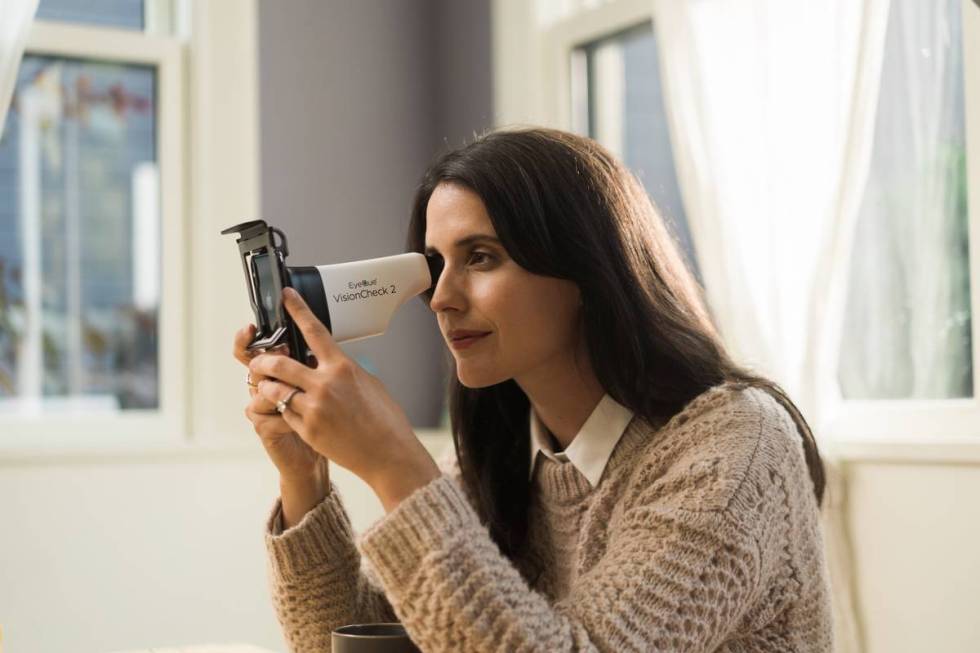Telehealth, not just for pandemics, takes virtual stage at CES

Telehealth, in all its various forms, has been around for decades. It’s just that, much like Joe Exotic and the multitude of food delivery apps, many of us experienced it for the first time while we were quarantining.
Whether it’s remote sessions with doctors or at-home monitoring to reduce the need for office visits, plenty of advancements supporting telehealth will be spotlighted Jan. 11-14 during the all-digital CES.
“This year, with all of the digital health products, we’ve seen rapid acceleration of these technologies given the global pandemic,” said Lesley Rohrbaugh, director of market research for the Consumer Technology Association, which owns and presents CES. “It’s definitely a category that has been rising over the past few years. It’s been a big category during CES. It will be again for CES 2021.”
The CES Innovation Awards honorees this year include:
— The EyeQue VisionCheck 2, a smartphone attachment and mobile app that lets customers test their vision at home and use the results to order eyeglasses.
— Toothpic, a teledentistry program that partnered with Philips. For $10, users can get help with a specific dental issue within six hours just by taking a photo of the problem area. An in-depth oral health report using six photos is available in less than 24 hours for $35.
— Oova, a fertility translator that will inform users of their most fertile days and confirm the release of an egg within seconds at home, then share those data points with your health care provider.
— Sunrise, a sensor weighing a tenth of an ounce that sticks to a person’s chin and, through the accompanying app, can diagnose sleep disorders and recommend a specialist the next morning without the need for wires and an overnight stay at a sleep clinic.
— And Epsy, the free app that helps epileptics track their seizures and their triggers to better inform their doctors. It was awarded Best of Innovation as the highest-rated health and wellness product.
“It’s likely going to become a new norm for a lot of folks,” Rohrbaugh said of telehealth. “It’s a convenient way to go to the doctor without having to leave your home.”
It’s also a booming business. According to data provided by CTA, connected health monitoring devices accounted for $365 million in wholesale revenue in 2019. That number jumped to $632 million last year and is predicted to reach $845 million in 2021.
“There’s just so many options out there right now,” Rohrbaugh said, “but I think it’s a great opportunity for patients to take hold of their everyday health.”
John Nixon relies on telehealth as the assistant director for clinical services and PK-12 outreach at The PRACTICE, UNLV’s community mental health clinic.
“It enables people to be able to receive services that maybe otherwise would put them on hold,” Nixon said of remote care.
To him, it’s essential in caring for patients who are hard to reach, either based on geography, temperament or a lack of options.
Some of Nevada’s rural areas lack convenient, in-person health care altogether, while even communities with hospitals can lack specialists. Certain patients put off visits to health care professionals, he said, because they feel apprehensive or even flustered in medical surroundings. Still others, even if they have a doctor nearby, might not be able to take an afternoon or day off work for an in-person visit, assuming they have reliable transportation to get them there.
The convenience of telehealth, though, comes at a cost, Nixon acknowledged.
He has concerns about its effectiveness, “in terms of being able to adequately get a sense for a person’s state of mind over video — and sometimes often choppy video — as opposed to what you can see in a person who’s sitting across from you in an office.”
With a video call, a health care professional also is likely only seeing a person from the shoulders up.
“You’re not getting the full picture of the body language,” Nixon said. “And those nonverbals are where the majority of communication takes place, actually.”
Still, he said, the benefits of health care, however it is received, outweigh the limitations of telehealth.
“I think for a good number of people who’ve used these services, that is kind of the idea, that something is better than nothing. And, in fact, they realize they’re actually able to accomplish more than they may have thought they could.”
Contact Christopher Lawrence at clawrence@reviewjournal.com or 702-380-4567. Follow @life_onthecouch on Twitter.